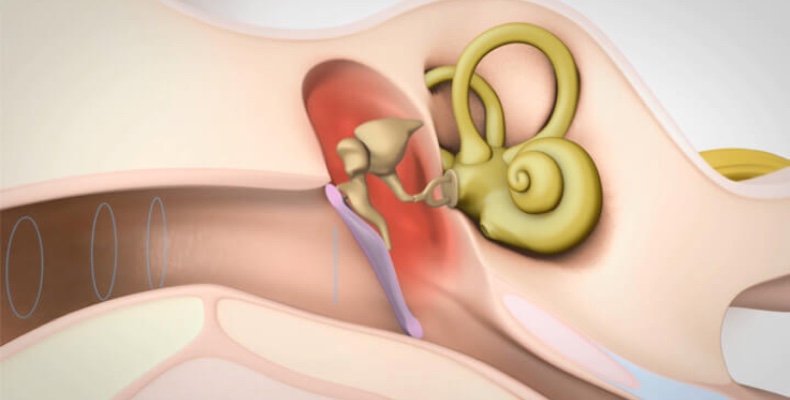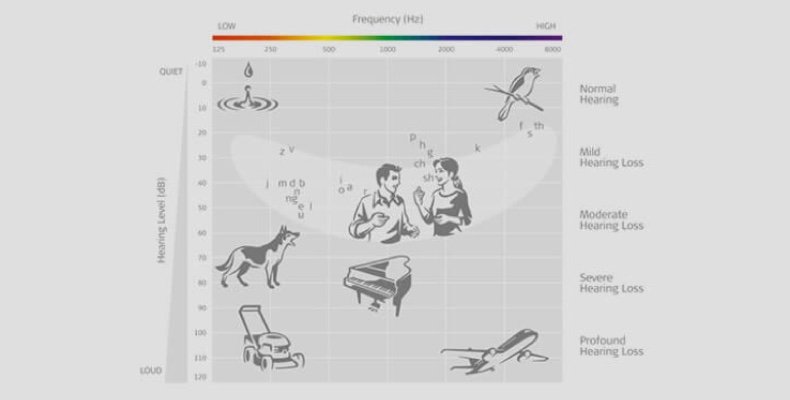
Jacoti is focused on mild to moderate hearing losses
20% of the global population have hearing loss (1.5 billion)
Number of people and percentage prevalence according to grades of hearing loss
People with mild hearing issues are underserved
Despite hearing thresholds within normal limits, 26 million people still experience difficulty hearing in noise. Audiologists typically do not recommend hearing aids for such patients or even for those with clinically Mild Hearing Loss.
Nevertheless, despite hearing relatively well, people with milder hearing conditions often struggle to understand speech in noisy situations or the lyrics of songs. As found in people with more serious hearing losses, people with mild hearing loss wish to hear well in noise, not merely make sound louder.
A market penetration rate for hearing aids of 10% and lower, after 120 years of existence, suggests a dysfunctional business model
Reasons for the low adoption rate for traditional hearing aids include: the end-user price of the product; a cumbersome user access and distribution model; limited overall audio quality; and stigma.
From the start, hearing aid designers focused on improving speech understanding and specifically targeted people with moderate to profound hearing loss. While understandable and logical, this approach resulted in the creation of hearing aids not well adapted to a wider market. Hearing aids based on this design model have reduced bandwidths that conserve system resources (like battery life) and high amplification that requires powerful and intrusive feedback cancellation algorithms. In addition, hearing aids designed according to traditional design constraints model are difficult even for well-trained audiologists to fit due to the ever-increasing complexity of their digital signal processing. Counter-intuitively, this additional complexity is often touted as a competitive differentiator when in fact it often leads to mis-fittings and reduced efficacy.
Finally, these design choices degrade the overall audio quality of the hearing aids. Many inexpensive consumer earphones feature far wider bandwidth and lower distortion than even the most expensive hearing aids. In other words, traditional hearing aids do not meet the high fidelity expectations of many users with milder hearing losses who, in addition to understanding speech, seek improved music enjoyment.
As a result of the technological limitations, hearing aids have been designed to be acceptable and useful to a very limited market segment of users in need of hearing support (less than 17% of the 466 million people worldwide who could benefit from hearing aids use them, according to the WHO).
True Wireless Earphones can help “normalise” hearing assistance”
“Exceptional sound quality may turn out to be THE most important factor in persuading young people with milder hearing losses to purchase a hearing aid.”
Karl Strom, The Hearing Review editor
Blog: Sound Quality as a Tipping Point for the Younger, Milder Hearing Loss Market
The traditional single-tasking hearing aids of the past century that merely amplified speech are history. Today, people expect the devices they wear in their ears to deliver great sound — and a lot more. Users need the kind of inter-connectivity with digital technology that consumer products like True Wireless Earphones regularly deliver: music, video, podcast streaming, fitness monitoring, and voice command capability.
By combining in an attractive ear-worn device all the rich features that are common in consumer audio technology with clinically viable hearing assistance and personalisation, hearing accessibility becomes normalised and stigma is reduced. It’s simply one more consumer feature that a user can choose to use. This will lead to wider acceptance and use of hearing assistance among vastly more individuals who need hearing assistance and who are not well-served by traditional hearing aids: people with mild to moderate hearing losses.
Nearly
50% of people aged 12-35 years
are at risk of hearing loss
due to prolonged and excessive exposure to loud sounds, including music they listen to through personal audio devices.
New WHO-ITU standard
The interest in hearing enhancement is on the rise, reflecting the shift of hearing personalization from a 'luxury' to an essential feature, akin to the trajectory of ANC in audio devices.
Qualcomm's 2023 State of Sound ReportLearn with Med-El about hearing

How we hear
Sound waves in the air travel from the outer ear to the eardrum where they are converted to mechanical vibrations in the middle ear. Next, these mechanical vibrations are converted again in the inner ear to electrical impulses that travel down the auditory nerve to the auditory centres in our brain — and we hear sound!
Discover more
Types of Hearing loss
Hearing loss can affect one ear or both ears and can have many different causes. There are four main types of hearing loss, each one treated in a different way: Conductive hearing loss, sensorineural hearing loss, mixed hearing loss and neural hearing loss.
Discover more
The audiogram
An audiogram is a chart used by hearing professionals that helps them understand any hearing problems you might have. Generated from a hearing test, the audiogram visually displays your hearing thresholds of different tones — that is, how loud a tone needs to be for you to be able to hear it.
Discover more
Help us to design solutions tailored to your hearing expectations
We believe that Hearing Optimisation means Life Quality: everybody should have access to affordable and effective listening technology in order to achieve their full potential and enjoy life to the fullest. Help us to understand your needs.
Take our survey